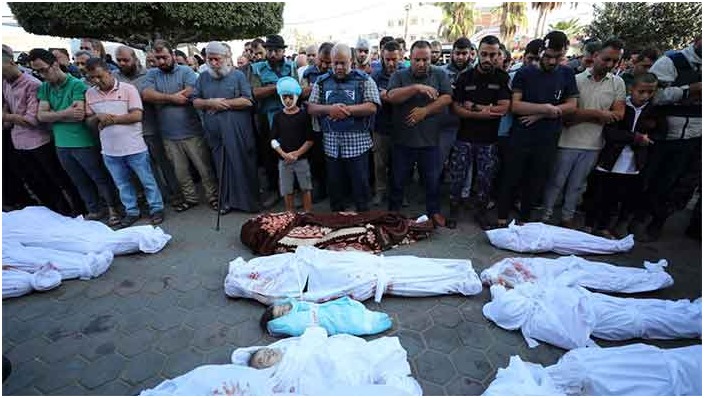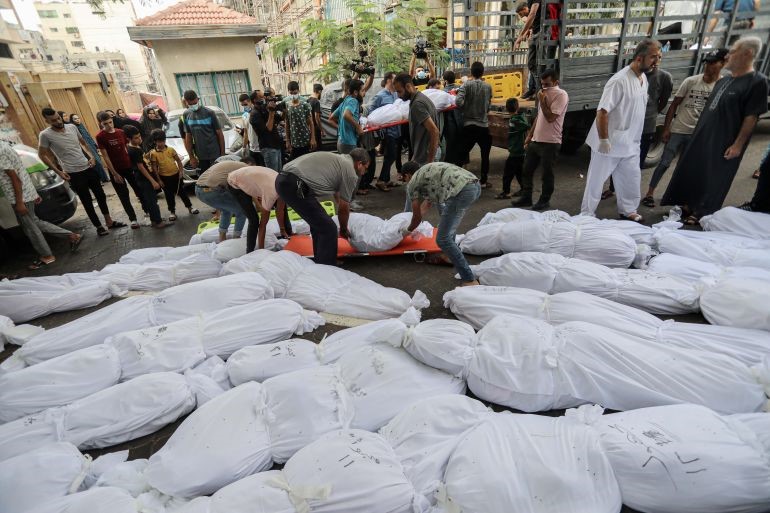The killing fields of Kashmir
0 comments | by Aijaz Zaka Syed

The killing fields of Kashmir By Aijaz Zaka Syed Dubai eye The writer is a Middle East based columnist. Kashmir is on the boil again. What happened in Handwara on Tuesday was hardly unusual. Three people were gunned down – two boys and an old woman – because the security forces decided to defend themselves against unarmed civilians, who were protesting against the alleged molestation of a Kashmiri woman. One of the victims, Nayeem Batt, was a promising state-level cricketer. This is a familiar story that Kashmir has lived and relived for the past many decades, especially since more than half a million troops were deployed in the state after the 1989 uprising. The administration’s promise of ‘investigating’ the killings is also as predictable as the inevitable outcome of such a probe. While regretting the incident, the army spokesperson has assured action, saying that it needs to be ascertained if the “standard operating procedures” were followed. The truth is, shooting to kill has long been the ‘standard operating procedure’ in Kashmir. From the 1990 Gaw Kadal massacre to the 1991 Kunan Poshpura rapes and the 1993 Bijebehara massacre to the shootings in Handwara yesterday, there has been a long and bloody trail of indiscriminate killings, rapes and disappearances that is as old as the history of insurgency. Accusations of sexual violence aren’t new either. As Shuddhabrata Sengupta argues in Kafila, a predatory sexual profile has been part of the operational signature. And then we Indians wonder why the Kashmiris hate us and demand ‘azaadi’ from ‘Bharat Mata’ at the drop of a hat! Many in the establishment and militant media are still worked up about the fact that some Kashmiris had – right in the heart of Delhi during the recent Jawaharlal Nehru University protests– the gumption to call for Kashmir’s freedom and worse seek the disintegration of India. The National Institute of Technology, Srinagar has been in the news since some students there cheered for West Indies in a T20 World Cup match against India, outraging their non-Kashmiri friends. Over the past several years, I have watched most of my Kashmiri friends grow progressively distant and even hostile. Even those who have served in government and once strongly believed that Kashmir’s destiny lay with India seem to have given up all hope and are increasingly cynical. The question is, seven decades after the state acceded to India, why are average Kashmiris so hopelessly alienated from the rest of the country? This is something that needs serious scrutiny by not just India’s leaders but by all Indians who never tire of insisting that Kashmir is an integral part of India. Truth be told, the average Kashmiri, as JNU student leader Shehla Rashid asserted at the recent India Today conclave, has seen nothing but a negative side of the great democracy, which is rightly celebrated for its diversity and secular, political institutions. The Indian Army is perhaps one of the best and most disciplined forces anywhere in the world. Unfortunately, the Kashmiris haven’t had a very happy experience in their engagement with this fine force, which is scarcely surprising, considering that more than 500,000 troops have lived in the valley, breathing down its people’s neck for the past three decades. Those who have been to Kashmir would know what I am talking about. There are security forces and security check points everywhere, belying the breath-taking natural beauty of the Himalayan paradise and its rich culture. It’s the highest concentration of jackboots anywhere on earth. This wouldn’t be an ideal scenario, even in the best of times, anywhere in the world. It is a recipe for disaster in a sensitive state like Jammu and Kashmir, which acceded to India in historically contentious circumstances. This is no time to go into that history, but it is a fact that the Kashmiris had been promised ‘special status’ within the Indian union and a say in their future by the leaders of free India. On the other hand, Pakistan has continued to stake a claim on Kashmir, insisting that, given a chance, the Kashmiris would go with it. India and Pakistan have gone to three disastrous wars over Kashmir. The region has forever remained on the knife’s edge thanks to the mountains of nukes that the two neighbours now possess. No wonder after the Kargil war, the then US President Bill Clinton described the region as “the most dangerous place on earth”. Under the circumstances, one would think that India would do its utmost to win the hearts and minds of the Kashmiris with kindness, understanding and persuasion, and not constantly test their patience with incidents like Handwara. This is not the first time that the trigger-happy men in uniform have opened fire on unarmed protesters, nor will it be the last. There has been a long history of such tragedies, leaving behind devastated families, ruined lives and a great deal of rage and grief. This is precisely why the separatist tendency in the state remains as strong as ever, even though militancy and ‘cross-border infiltration’ have nearly been wiped out. Even Pakistan has largely stopped bringing up the Kashmir question in international forums. However, India cannot win Kashmir and the Kashmiris in a real sense as long as it maintains its massive security presence in the state. While troops who step out of line are quickly court-martialled and brought to justice elsewhere in India, they get away with murder, and more, in Kashmir thanks to the “special powers” that they are armed with in the state. It is argued that the draconian AFSPA (Armed Forces Special Powers Act) and the whole culture of impunity that it spawns may be responsible for hundreds, if not thousands, of killings, rapes and disappearances, fuelling acute anger against the army and the Indian state itself. Every time episodes like Handwara are investigated, those responsible for them hide behind the AFSPA. This has become the virtual license to kill. However, repeated demands by the Kashmiris and human rights groups to repeal AFSPA have fallen on deaf ears in Delhi. It is no surprise then that all these years not a single soldier has faced the law. The scrapping of AFSPA had been one of the key promises of the ruling Peoples’ Democratic Party of Mufti Sayeed and his daughter Mehbooba. However, it proved to be a big stumbling block that they couldn’t overcome when they joined hands with the BJP. Perhaps it is too much to expect that the new chief minister, Mehbooba Mufti, will accomplish something that her predecessors, including her father, have failed to do. But unless India takes some extraordinary measures, and soon, to win back the trust and confidence of the Kashmiris and to repair what remains of this delicate relationship, it may end up losing them forever. And this mission to save Kashmir must begin by recalling the army from the valley as soon as possible. A soldier’s place is on the border, defending the country’s security and integrity. His job is not to fight daily battles against his own people. Secondly, black laws like AFSPA must go. Such laws and the impunity that they offer belong in an apartheid state like Israel, not in a democracy that swears by Gandhi and Ambedkar. Without accountability and the rule of law, all is lost, democracy or no democracy. It’s about time we stopped viewing Kashmir as a problem and as a territory that must be preserved, even if at gunpoint and at the cost of its people. Kashmir is not just prime real estate or a fabled tourist attraction. Kashmir is nothing without its people.





